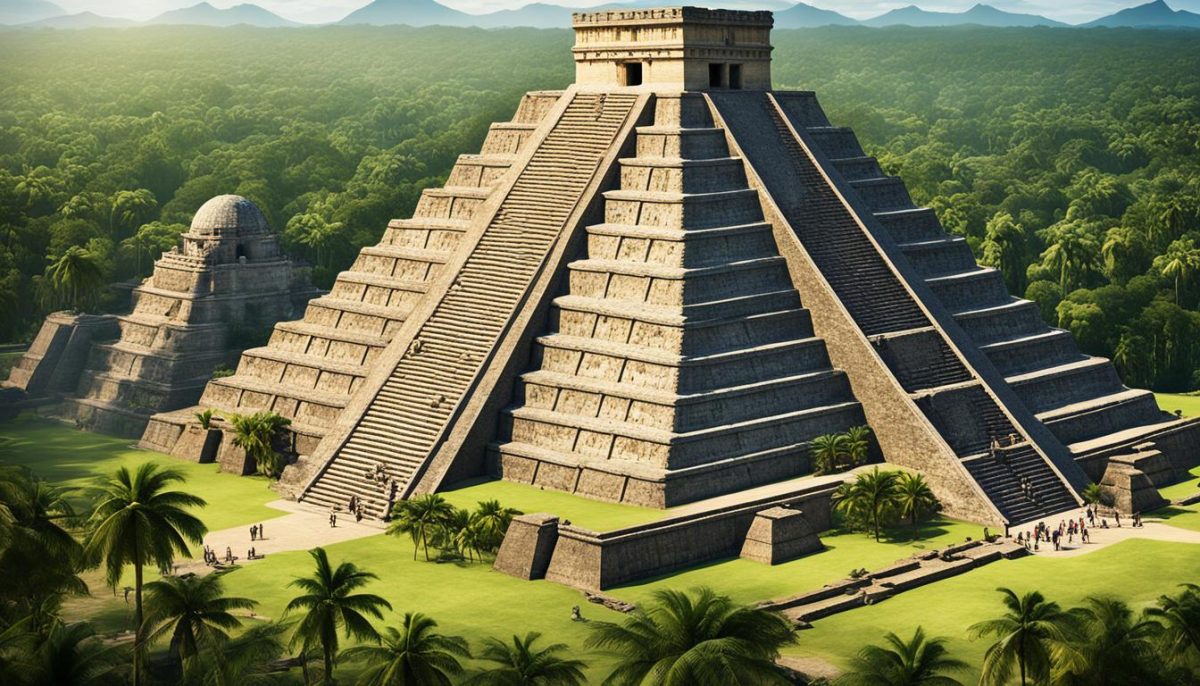
The Sport of Life and Death: The Mesoamerican Ballgame
The Sport of Life and Death was voted Best Overall Site for 2002 by Museums and the Web and has won a slew of other web awards. The site is based on a traveling exhibition now showing at the Newark Museum in Newark, New Jersey and bills itself as “an online journey into the ancient spectacle of athletes and gods.” The Sport of Life and Death features dazzling special effects courtesy of Macromedia Flash technology and its overall layout and organization are superb. Not just stylish, the site’s content is excellent and engaging as well. For instance, there are helpful interactive maps, timelines, and samples of artwork in the Explore the Mesoamerican World section. The focus of the site, however, is the Mesoamerican ballgame, the oldest organized sport in history. The sport is explained through a beautiful and engaging combination of images, text, expert commentary, and video. Visitors can even compete in a contest! A must see for Middle School or 9th-grade World History teachers.
Ancient Mesoamerican Civilization
This is a broad site by the University of Minnesota Department of Anthropology that supplies information regarding Mesoamerican Civilizations. The primary groups addressed are the Maya, Mixtec, Zapotec, and Aztec. Major topics include Writing Systems, Government, Religion, the Mayan Calendar, and more.
Maya Adventure
The Science Museum of Minnesota presents Maya Adventure, a World- Wide Web site that highlights science activities and information related to ancient and modern Maya culture. Maya Adventure includes images from the Science Museum’s anthropological collections and activities developed by the Science Museum’s education division. Featured in the project is information from two exhibits about the Maya developed by the Science Museum of Minnesota: “Cenote of Sacrifice” and “Flowers, Saints and Toads.”
Mayan Architecture
Mayan Architecture is an informative site that covers different architectural styles and periods. Specific architectural characteristics are explained and illustrated.
Why do Civilizations Collapse?
Part of the Annenberg/CPB exhibits, this site focuses on the fall of ancient civilizations in four areas: Maya, Mesopotamia, Chaco Canyon (southwest U.S.), and Mali and Songhai. Nice images and interesting presentation.
Lesson Plans, Teacher Guides, Activities and more
Conquistadors Teaching Guide: Different Views of the World
Was the fall of the Aztec Empire inevitable? Was Cortes a hero or a villain? What would the world be like today if the Aztecs had been the “conquistadors” and conquered Europe? Contains complete PBS lesson plans.
Conquistadors Teaching Guide: The What Ifs of History
Why do you think that such a well-governed and peaceful empire, which stretched 2,500 miles from Ecuador south to Chile, could have been conquered by only 200 Spanish Conquistadors? What is the legacy of the Incas? Contains complete PBS lesson plans.
Course Models: Meso-America and the Andes
Part of the California History-Social Science content standards and annotated course, this site includes background information, focus questions, pupil activities and handouts, an assessment, and references to books, articles, web sites, literature, audio-video programs, and an historic site. Grade 7.
Mystery of the First Americans: The Dating Game
Play this PBS Nova Shockwave game to see how scientists use radiocarbon dating to learn about ancient people.
Ancient Indian Art in the Americas
The Art Institute of Chicago provides resources, lesson plans and activities for the Mesoamerican and Andean regions.
Brief Review in Global History and Geography: Document Based Essays and Practice Tests
PH@School’s Brief Review in Global History and Geography Web site provides multiple-choice questions from actual Regents exams. You can also practice your test-taking skills on document-based essay questions (DBQs), with the option of e-mailing answers directly to your teacher for review.

